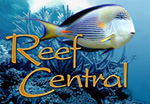imanewbies
New member
Ah I see, thanks tmz & fishypapa for the clarifications!
Ok....So I'm in the process of getting ready to setup the NPX bio-pellets. After reading everything I possibly could on the subject I'm just curious if there's a way to limit the amount of bacteria count. I've read the stories related to tanks going to zero phosphates and nitrates and the livestock having a hard time and corals dying off. If this is at the "recommended" usage of the bio pellets, then if you cut in 1/2 that amount would you in essence get 1/2 the amount of bacteria? Basically for my tank I have a large load of fish and my nitrates is in the 40's. Same story as everyone wanting to reduce the nitrates, and the only alternative I could see that would reduce without doing as many water changes is to drop my fish count down, which of course I don't want to do lol. So I purchased a phosban reactor with the Npx pellets. My setup is a 150 gallon and the phosban reactor will not hold the "recommended" amount of pellets needed, so my thought was to have it work in unison to reduce the nitrate, not eliminate to zero, just control it. At this point I'm doing a 16% water change on a weekly basis and the nitrates are still kicking my tail.
Wow,...hard to believe, shutting down a 5+ year old "VERY GOOD" thread! and for what?... 5:30 am,...take a shower, have a cup of coffee, eat a donut, wake up, get the cobwebs out! Talk about censorship. I have seen other threads were there were numerous unheeded warnings before being closed, and maybe the debate was ongoing,... I was taking notes from the various thoughts and inputs to form my own conclusion. Did not see that coming. :mad2:---Rick
Hi,
I've been of the computer for a while so this response is late.
Stn; never saw base stn ,I could attribute to vodka or vinegar dosing;the are just so many possible explanations including a rapid reduction in PO4. I run rox 8 gac and skim well .With very low ie, 0 NO3 and PO4 orgaic carbon might build up an make trouble. 8ml sunds like a nice maintenance dose to maintain the feeding and PO$ and NO3 levels.
The caheto is probably getting more nutrients with less bacteia to compete for them. When PO4 drops below 0.03ppm chaeto has a hard time , ime.
Acro growth; I'm a little confused . Did yor observe increased growth while dosing or after you cut it back? I do think some bacteria feed the food web from the bottom up and some may be eaten by corals directly. Zoanthus , in particular do better with teh organics than without them. Sponges too. Maybe sps or maybe they pick up other types of plankton fed by the bacteria,Thye also need PO4 and dissove nitrogen, so dosing organic carbon an be easily overdone.
